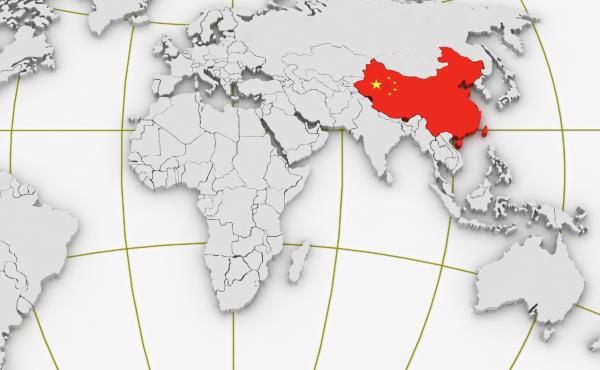
The ECGI blog is kindly supported by

How Legal Innovations from the Global South can Improve Insolvency Systems in the Global North
Despite the influence of the Global North in many insolvency laws and practices in the Global South, in my new article, titled “Insolvency Law in the Global South: Lessons for the Global North,” I demonstrate that the Global South has innovated in many aspects of insolvency law. More importantly, I show how these innovations can help improve many insolvency systems in the Global North.
As evidenced by the international influence of the U.S. Chapter 11, the European-style pre-insolvency proceedings, and the U.K. administration regime, the Global South (and the Global North) primarily look to insolvency regimes from the Global North when seeking inspiration for reforms. However, apart from the fact that legal transplants—particularly from countries with very different market and institutional environments—generally fail, insolvency regimes in the Global North are not the paradise often envisioned by the Global South.
For example, the worldwide popular U.S. Chapter 11 is far from perfect. First, it is a very costly proceeding and appears to have become even more expensive in the past decade. Additionally, it has been shown that the increasing power of DIP lenders is often leading to inefficient outcomes and distortions of priorities in bankruptcy. Moreover, the debate on whether the lack of financial distress can lead to the dismissal of a Chapter 11 reorganization procedure has led to uncertainty and litigation costs.
In other countries in the Global North, the situation is not much better. Despite the adoption of relatively attractive preventive restructuring frameworks, many jurisdictions in the European Union still have inefficient insolvency proceedings. In other advanced economies, such as Australia and New Zealand, insolvency proceedings remain unattractive for debtors and unsecured creditors. And in most jurisdictions around the world, including advanced economies with sophisticated insolvency frameworks such as Singapore, the stigma of insolvency is still a major concern.
My article shows how many innovative solutions from the Global South can help address some of those problems found in many insolvency systems in the Global North. For example, in advanced economies where insolvency proceedings are slow and costly, out-of-court workouts can be an efficient alternative. Yet, they need to be actively promoted. The experiences of Malaysia with its Corporate Debt Restructuring Committee established by the central bank, or the tax incentives adopted in Thailand in the aftermath of the Asian Financial Crisis, can provide valuable lessons to achieve that goal.
The United States can also learn many valuable lessons from the Global South. For example, in Uruguay a debtor’s filing automatically presumes insolvency. Opportunistic filings can be handled ex post, since a majority of unsecured creditors may terminate the process and force liquidation. A similar approach in the U.S. would settle the debate over financial distress requirements, reduce litigation costs, and curb opportunistic use of Chapter 11 while preserving quick access to reorganization.
India, Chile and the Dominican Republica can also provide valuable lessons from the improvement of Chapter 11. In these jurisdictions from the Global South, creditors play a key role in the approval of new financing. In Chile, DIP loans exceeding 20% of a debtor’s assets must be approved by creditors. In India, new financing should be approved by the committee of creditors. In the Dominican Republic, while the decision to approve a DIP loan is ultimately made by the court, creditors can veto the approval of the loan. Some of the problems associated with the increasing power of DIP lenders in Chapter 11 can be mitigated by empowering creditors in the approval of DIP loans. The Global South shows that there are many ways to do so.
The governance of insolvency proceedings in many countries in the Global North could also benefit from the study of the Global South. For instance, under the administration-style proceedings found in countries such as the United Kingdom, Australia, and New Zealand, an external administrator replaces the debtor’s management team, raising costs of the procedure, discouraging early filings, and reinforcing the stigma that insolvency results from managerial failure. By contrast, in some countries in the Global South, such as Colombia, the default rule allows the debtor to remain in possession. An external insolvency practitioner may be appointed, however, if it is requested by 30% of the company’s non-related creditors, or in some exceptional cases typically involving fraud or the existence of a complex procedure. This approach preserves managerial expertise while maintaining safeguards against misconduct.
Technology is another frontier where Colombia has also innovated, and the Global North can learn significantly from it. Its Insolvency Module (“MI”) uses biometric authentication and AI to review filings and verify completeness, sharply reducing delays. Before MI, assessing a petition took around five months; now, with AI, it takes 10 to 45 days. The system shows how digital infrastructure can make insolvency faster and more accessible—especially where debtors don’t automatically gain protection upon filing.
To tackle the persistent stigma of insolvency existing in most countries around the world, Chile offers valuable lessons. Since the 2014 Insolvency Act, filings have surged as both debtors and creditors have become more willing to use formal procedures. This cultural shift stems from a comprehensive reform strategy combining legal, institutional, and educational measures, including: (i) the adoption of more attractive proceedings for debtors and creditors; (ii) reframing terminology (e.g., using “debtor” instead of “bankrupt” and renaming the “Superintendence of Bankruptcy” as the “Superintendence of Insolvency and Reentrepreneurship”); and (iii) proactive public education and awareness in insolvency. Chile demonstrates that insolvency stigma is not an intrinsic problem associated with certain cultures or countries. Instead, it is a problem that, with the right policies and institutional reforms, can be tackled — and in a short period of time.
These examples confirm what Professor Mariana Pargendler anticipated in her pioneering work on corporate law and legal heterodoxy in the Global South: the study of the Global South can expand our institutional imagination. Therefore, whether it is for the much-needed purpose of improving the design of insolvency law in the Global South, or at least for expanding the universe of ideas that can help improve many insolvency systems in the Global North, the Global South – and the Global South beyond the BRICS economies – needs to be more actively included in the study of insolvency law. Otherwise, we will be missing the opportunity to learn from many ideas and innovative solutions that can contribute to the improvement and understanding of insolvency systems around the world.
____________
Aurelio Gurrea-Martínez is an Associate Professor of Law at the Singapore Management University Yong Pung How School of Law, and an ECGI Research Member.
__________
This blog is based on a paper presented at the Asian Corporate Law Forum (ACLF). Visit the event page to explore more conference-related blogs.
The ECGI does not, consistent with its constitutional purpose, have a view or opinion. If you wish to respond to this article, you can submit a blog article or 'letter to the editor' by clicking here.






